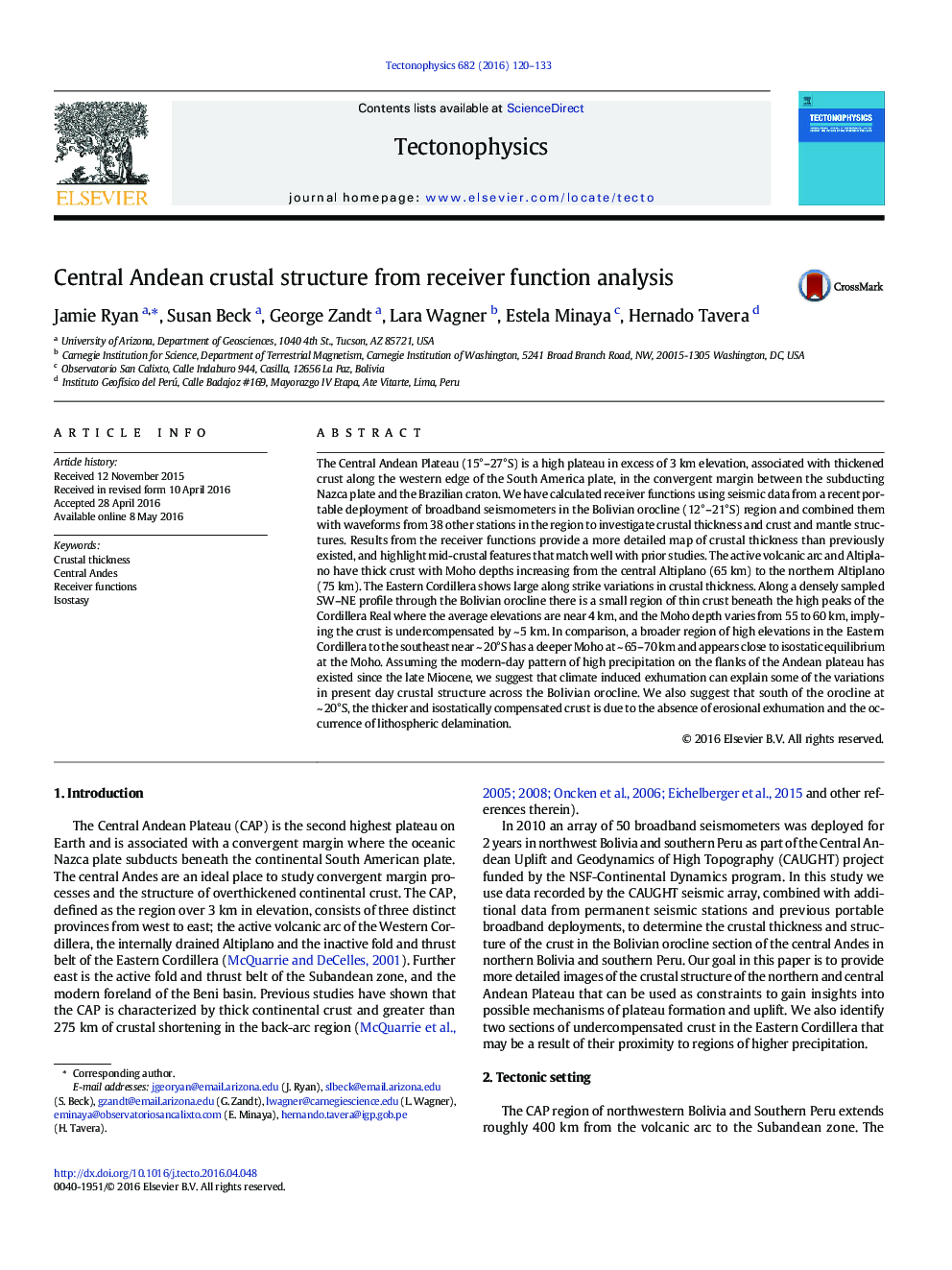| کد مقاله | کد نشریه | سال انتشار | مقاله انگلیسی | نسخه تمام متن |
|---|---|---|---|---|
| 4691308 | 1636716 | 2016 | 14 صفحه PDF | دانلود رایگان |
• A well-resolved depth to Moho map is presented for the Northern Altiplano.
• A low-velocity zone is identified beneath the active volcanic arc.
• An increase in seismic velocity matches the basal detachment of the Subandean zone.
• Two areas beneath the Eastern Cordillera are thinner than isostatic predictions.
• Our results suggest lower crustal flow and erosion as possible thinning mechanisms.
The Central Andean Plateau (15°–27°S) is a high plateau in excess of 3 km elevation, associated with thickened crust along the western edge of the South America plate, in the convergent margin between the subducting Nazca plate and the Brazilian craton. We have calculated receiver functions using seismic data from a recent portable deployment of broadband seismometers in the Bolivian orocline (12°–21°S) region and combined them with waveforms from 38 other stations in the region to investigate crustal thickness and crust and mantle structures. Results from the receiver functions provide a more detailed map of crustal thickness than previously existed, and highlight mid-crustal features that match well with prior studies. The active volcanic arc and Altiplano have thick crust with Moho depths increasing from the central Altiplano (65 km) to the northern Altiplano (75 km). The Eastern Cordillera shows large along strike variations in crustal thickness. Along a densely sampled SW–NE profile through the Bolivian orocline there is a small region of thin crust beneath the high peaks of the Cordillera Real where the average elevations are near 4 km, and the Moho depth varies from 55 to 60 km, implying the crust is undercompensated by ~ 5 km. In comparison, a broader region of high elevations in the Eastern Cordillera to the southeast near ~ 20°S has a deeper Moho at ~ 65–70 km and appears close to isostatic equilibrium at the Moho. Assuming the modern-day pattern of high precipitation on the flanks of the Andean plateau has existed since the late Miocene, we suggest that climate induced exhumation can explain some of the variations in present day crustal structure across the Bolivian orocline. We also suggest that south of the orocline at ~ 20°S, the thicker and isostatically compensated crust is due to the absence of erosional exhumation and the occurrence of lithospheric delamination.
Journal: Tectonophysics - Volume 682, 6 July 2016, Pages 120–133
